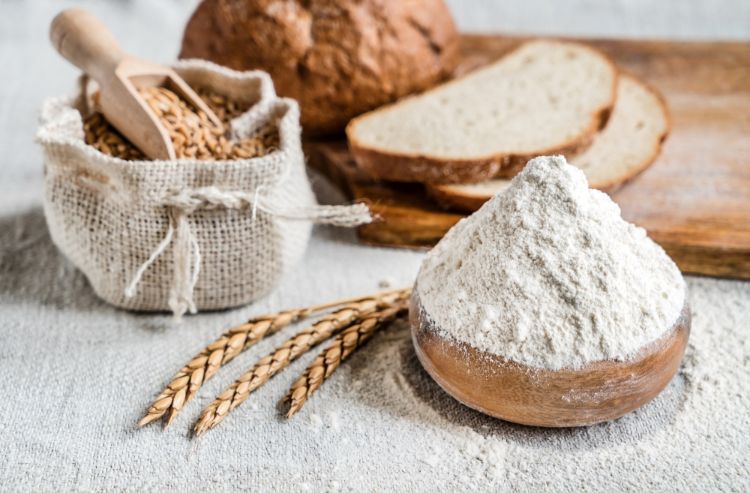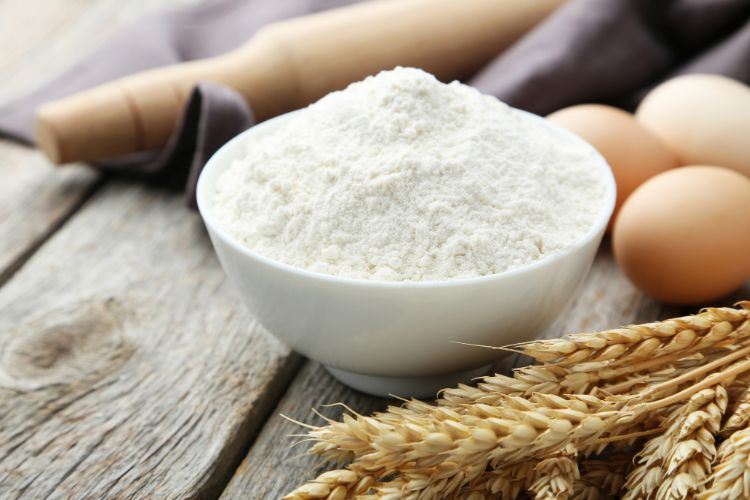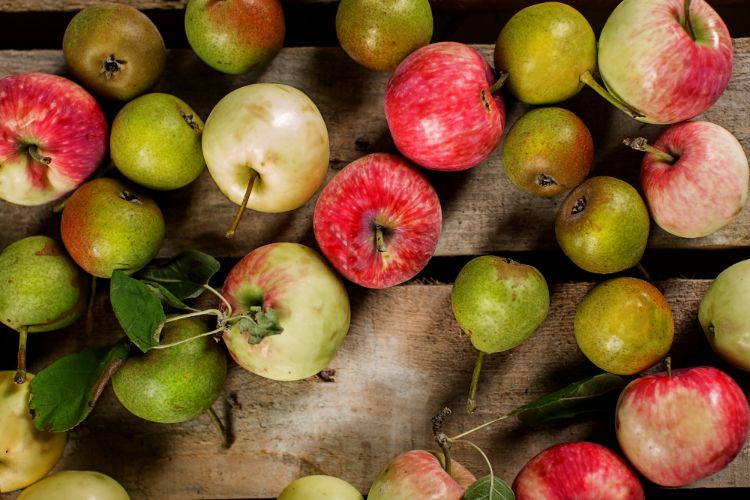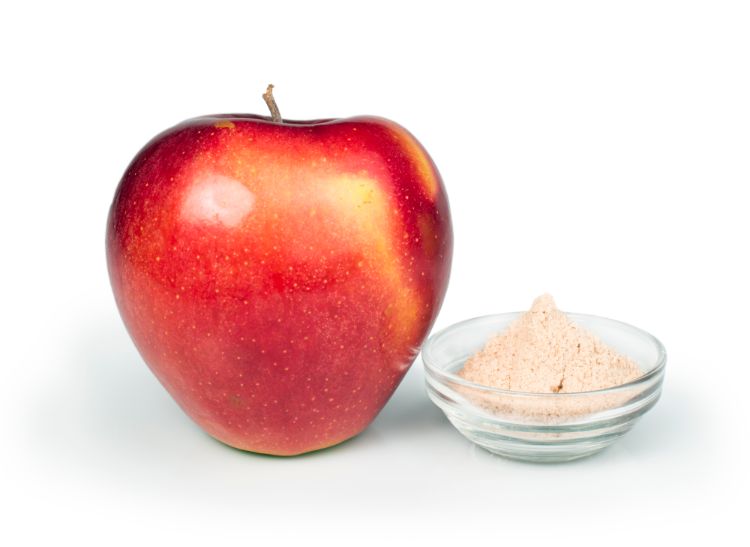Vegetables with high and low starch content — List
Starch is one of the main carbohydrates in the human diet. It is synthesized by many plants under the influence of sunlight.
Starch can be found in most foods (whole grain bread, cereals, pasta, fruits), but vegetables are the most preferred source of this substance.
Scientists divide vegetables into two groups: starchy and non-starchy. The first group is characterized by a high content Resistant starch and protein, which makes them more high-calorie.
Dividing vegetables by the amount of starch

Different vegetable crops differ significantly in starch content. For example, 100 grams of potatoes (belongs to the group of vegetables rich in starch) contains up to 19 grams of starch and 90 calories, and broccoli (a non-starchy vegetable) contains only 6-7 grams of starch and 28 calories (per 100 grams of product).
The list of vegetables with a high percentage of starch includes:
- Beans;
- Peas;
- Potatoes;
- Corn;
- Lentils;
- Cassava;
- Mash.
Low starch vegetables are:
- Zucchini;
- Asparagus;
- Brussels sprouts;
- Broccoli;
- Cauliflower;
- White cabbage;
- Celery;
- Cucumbers;
- Eggplant of all varieties;
- Onion;
- Tomatoes;
- Spinach;
- Turnip.
Scientists recommend using at least 450 grams of vegetables (any) per day to fully meet the body's needs for dietary fiber, vitamins and other valuable nutrients.
7 facts about the benefits of starch can be found here →
All vegetables are rich in nutrients
 Starchy and non-starchy vegetables contain almost all groups of nutrients necessary for the proper functioning of the human body.
Starchy and non-starchy vegetables contain almost all groups of nutrients necessary for the proper functioning of the human body.
Vegetables are rich in potassium, vitamin K, folic acid and magnesium. These biologically active substances and macronutrients have an impressive set of useful properties:
- Folic acid , according to American scientists , it is necessary to maintain metabolism (synthesis of amino acids, regulation of release of enzymes and the absorption of other vitamins), as well as for the growth and development of the fetus during pregnancy. The main source is legumes and leafy green vegetables.
- Vitamin K is needed for Maintaining bone mineral density , improving the sensitivity of peripheral tissues to insulin. Vitamin K also has antitumor activity. Get the substance, according to experts from India , it is possible from coriander, leafy greens, onions and broccoli cabbage.
- Magnesium ensures the replication of DNA and RNA, regulates the release of ATP. It is also necessary to regulate the work of smooth and striated muscles, conducting impulses along nerve fibers. In case of deficiency, disorders of the musculoskeletal, peripheral nervous and cardiovascular systems are observed. Similar information lead specialists of the Academy of Micronutrient Medicine (USA). The largest amount of magnesium is found in legumes and onions.
When consuming the recommended daily dose of vegetables, it is also possible to fully satisfy the body's needs for iron and zinc.
An important feature of vegetables is the content of a large amount of antioxidant substances (vitamins C and E), which protect the body's cells from the negative effects of free radicals and the effects of oxidative stress. In their absence in the diet, there is a change in the structure of DNA, proteins and lipids, which leads to a variety of diseases, including deadly ones (cancer). Antioxidants, according to American scientists , &8212; one of the main ways to prevent malignant transformation of body cells.
All vegetables, if consumed systematically, Slow down aging due to the impact on the main molecular mechanisms of this process.
Vegetable crops contain (in most cases) low amounts of glucose, fats and sodium ions, which makes them an extremely useful type of food.
All vegetables contain fiber
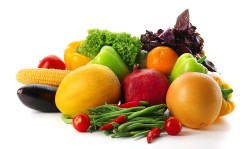 Fiber content is almost the same in all vegetables. For example, starchy vegetables (per 100 grams of product) contain about 5 grams of fiber, non–starchy ones - from 2.5 to 6 grams.
Fiber content is almost the same in all vegetables. For example, starchy vegetables (per 100 grams of product) contain about 5 grams of fiber, non–starchy ones - from 2.5 to 6 grams.
Dietary fiber (fiber) is important for maintaining Digestive health . They contribute to an increase in the number of beneficial representatives of the microflora in the colon, inhibit the vital activity of pathogenic and opportunistic bacteria. As a result, there is an improvement in the breakdown and absorption of nutrients from food.
Foreign studies have revealed a number of beneficial properties of dietary fiber :
- Reducing the risk of cardiovascular disease. According to scientists , consumption of only 25-30 grams of fiber per day significantly reduces the incidence of coronary heart disease, myocardial infarction, stroke, hypertension.
- Normalization of the lipid profile. Proven what is dietary fiber Reduce total cholesterol and low–density lipoproteins are the main "culprits" of the development of atherosclerosis of large vessels.
- Prevention and treatment of type II diabetes mellitus. Fiber reduces glucose and glycated hemoglobin levels (effect proven from a scientific point of view). Also is celebrated increased sensitivity of fat and muscle tissue cells to insulin, which is extremely important for the rapid utilization of glucose absorbed into the blood from the intestine after eating a carbohydrate-rich meal.
- Prevention of inflammatory diseases of the gastrointestinal tract. According to experts from Poland , dietary fiber is effective in treating and reducing the incidence of Crohn's disease, ulcerative colitis, and most acute intestinal infections.
Starchy vegetables contain more carbohydrates and calories
Starchy vegetables are high in carbohydrates and high in calories. This feature is the subject of scientific debate regarding the safety of taking starch-rich vegetables, especially with a burdened endocrine background.
Carbohydrates
 The carbohydrate content in starchy vegetables is about 3-4 times higher than non-starchy ones and amounts to about 13-26 grams per 100 grams of product.
The carbohydrate content in starchy vegetables is about 3-4 times higher than non-starchy ones and amounts to about 13-26 grams per 100 grams of product.
Such vegetables increase blood glucose levels a little faster after consumption, therefore, they It is recommended to limit in pathologies of the glycemic background (type II diabetes mellitus, fasting hyperglycemia, impaired glucose tolerance). The preferred dose of such vegetables for patients with diabetes mellitus is up to 180 grams per day.
Calories
 The high energy value of starchy vegetables is due to the increased carbohydrate content. On average, their caloric content is 3-6 times higher than that of vegetables with a low starch content.
The high energy value of starchy vegetables is due to the increased carbohydrate content. On average, their caloric content is 3-6 times higher than that of vegetables with a low starch content.
Starchy vegetables contain 70 to 175 calories per 100 grams, while non–starchy vegetables contain up to 35 calories. This is important for people who are obese or on a sports diet.
Starchy vegetables are rich in resistant starch and proteins
Another distinctive feature of starchy vegetables is the high level of resistant starch and valuable proteins.
Resistant Starch
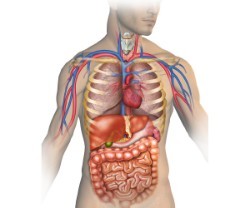 Resistant Starch, according to Chinese scientists
, it is found in large quantities in potatoes and other root crops, as well as in most beans.
Resistant Starch, according to Chinese scientists
, it is found in large quantities in potatoes and other root crops, as well as in most beans.
The main advantages of sustainable starch are:
- Improving the health of the digestive system . Proven that dietary fibers improve the composition of microflora, are useful in the presence of infectious and autoimmune intestinal pathologies, inhibit chronic inflammation in the intestinal wall and increase the effectiveness of enzymatic cleavage of food.
- Weight loss aid. Indigestible starch activates the production of satiety hormones (peptide YY, glucan-like peptide, leptin), which, acting on the brain, lead to a feeling of satiety and saturation of the body.
- Improved absorption of nutrients. This type of dietary fiber increases the bioavailability of calcium, phosphorus, iron, zinc and magnesium. Effects proven by scientists from the USA.
- Reduction of total cholesterol in the blood. According to the information by Spanish experts, sustainable fiber inhibits cholesterol synthesis by affecting the activity of 9 genes responsible for this process.
- Decrease in blood glucose . Proven It is shown that butyrate, which is formed during the interaction of intestinal microflora with resistant starch, increases the sensitivity of peripheral tissues to insulin, leading to increased utilization of glucose from the blood.
- Strengthening the immune system. Dietary fiber normalizes the work of local factors of the immune system in the lumen of the digestive system, provide prevention of autoimmune and allergic diseases.
- Vision improvement. American scientists proved that sustainable dietary fibers increase the density of photoreceptors on the retina.
Proteins
Most starchy vegetables (especially legumes and lentils) are important sources of protein. 100 grams of the product provides the body with 10 grams of protein, which is about 20% of the daily requirement.
Employees of McMaster University (Canada) claim that proteins contribute to the rapid development of a feeling of satiety, allow you to control the level of appetite and body weight, allow you to maintain the tone and performance of skeletal muscles.
Rules of use
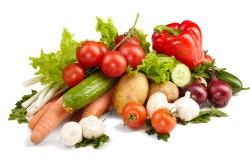 According to experts , the recommended daily allowance of vegetables for the "average" person is about 450 grams per day, of which 60% should be for starchy vegetables, 40% for non-starchy ones.
According to experts , the recommended daily allowance of vegetables for the "average" person is about 450 grams per day, of which 60% should be for starchy vegetables, 40% for non-starchy ones.
According to the set of useful properties (depending on the type of culinary processing), vegetables can be classified as follows (in descending order):
- Fresh;
- Frozen;
- Canned;
- Subjected to heat treatment (frying, cooking, stewing, etc.).
When using vegetable juice, it must be remembered that it has a low content of dietary fiber, but significantly more vitamins and macronutrients.
Do not combine the use of vegetables with sauces and seasonings (especially spicy), fatty and sweet foods.
It is recommended to limit the intake of heat-treated vegetables and give preference to fresh ones.
What to remember
- Both starchy and non-starchy vegetables are rich in important vitamins, macro- and microelements, as well as dietary fiber.
- Vegetables with a high starch content contain more carbohydrates and proteins, and also have a higher calorie content. Their consumption should be limited to people who suffer from diabetes and obesity.
